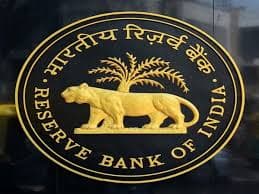Why in News?
- What’s in today’s article:
- About FSR (Purpose, Components, Significance, etc.)
- Key takeaways from latest FSR
Why in news?
- Recently, the Reserve Bank of India (RBI) released its biannual Financial Stability Report.
- As per the report, asset quality of the banking system has improved with Gross Non-Performing Assets (GNPA) ratio declining to the lowest in 7 years.
What is the Financial Stability Report?
- Financial Stability Report is released by the RBI twice a year.
- As the name suggests, details the state of financial stability in the country, and it is prepared after taking into account the contributions from all financial sector regulators.
- As part of the FSR, the RBI also conducts a Systemic Risk Survey (SRS), wherein it asks experts and market participants to assess the financial system on five different types of risks – Global, Financial, Macroeconomic, Institutional, General.
Significance
- Reading the FSR tells us how robust or vulnerable our financial system — especially our banking system — is to the changes in the economy.
- As a corollary, it also tells us whether and to what extent will our banks and other lending institutions (such as Non-Banking Finance Companies and Housing Finances Companies) be able to support future growth.
- For instance, if the FSR reveals that the percentage of NPAs or bad loans in the banking system is high and also shows that the government fiscal deficit is also high then it means that not only will the banks struggle to function effectively (and fund future growth) but also that if banks were to falter then the government may find it tough to bail them out.
Key Highlights of the Report
- Gross NPA –
- Non-Performing Assets (NPA) are loans and arrears lent by banks or financial institutions whose principal and interests are delayed beyond 90 days.
- As per the report, the GNPA ratio has declined to a seven-year low of 5 per cent in September, 2022.
- The GNPA ratio estimate is based on the macro-stress test performed to assess the resilience of banks’ balance sheets to unforeseen shocks.
- Capital to Risk (Weighted) Assets Ratio –
- CRAR is the ratio of a bank’s capital to its risk-weighted assets and current liabilities.
- The higher a bank’s CAR, the more likely it is to be able to withstand a financial downturn or other unforeseen losses.
- As per the report, the CRAR of 46 major banks is 15.8 per cent which is way higher than the minimum capital requirement which is 9 per cent.
- Performance of NBFCs –
- A Non-Banking Financial Company (NBFC) is a company registered under the Companies Act, 1956 engaged in the business of loans and advances.
- As per the report, the NBFC sector too has recovered strongly in the wake of the second wave of Covid, with asset quality showing a continuous improvement.
- Financial Markets –
- As a result of the interplay of multiple shocks, financial conditions have tightened and there is a heightened volatility in the financial markets.
- Insurance Sector –
- For both life and non-life insurance companies, the consolidated solvency ratio remained above the prescribed minimum level.
Q1) How many times a year is financial stability report released?
The Reserve Bank of India publishes a financial stability report twice a year.
Q2) What does a low capital to asset ratio mean?
A lower capital to asset ratio indicates that the company is using more debt to finance its assets. This makes the company riskier because it is more dependent on debt to finance its operations.
Source: Banks Pass Rbi’s Stress Tests On Low Bad Loans, Adequate Capital | Sansad TV
Last updated on June, 2025
→ UPSC Notification 2025 was released on 22nd January 2025.
→ UPSC Prelims Result 2025 is out now for the CSE held on 25 May 2025.
→ UPSC Prelims Question Paper 2025 and Unofficial Prelims Answer Key 2025 are available now.
→ UPSC Calendar 2026 is released on 15th May, 2025.
→ The UPSC Vacancy 2025 were released 1129, out of which 979 were for UPSC CSE and remaining 150 are for UPSC IFoS.
→ UPSC Mains 2025 will be conducted on 22nd August 2025.
→ UPSC Prelims 2026 will be conducted on 24th May, 2026 & UPSC Mains 2026 will be conducted on 21st August 2026.
→ The UPSC Selection Process is of 3 stages-Prelims, Mains and Interview.
→ UPSC Result 2024 is released with latest UPSC Marksheet 2024. Check Now!
→ UPSC Toppers List 2024 is released now. Shakti Dubey is UPSC AIR 1 2024 Topper.
→ Also check Best IAS Coaching in Delhi






















